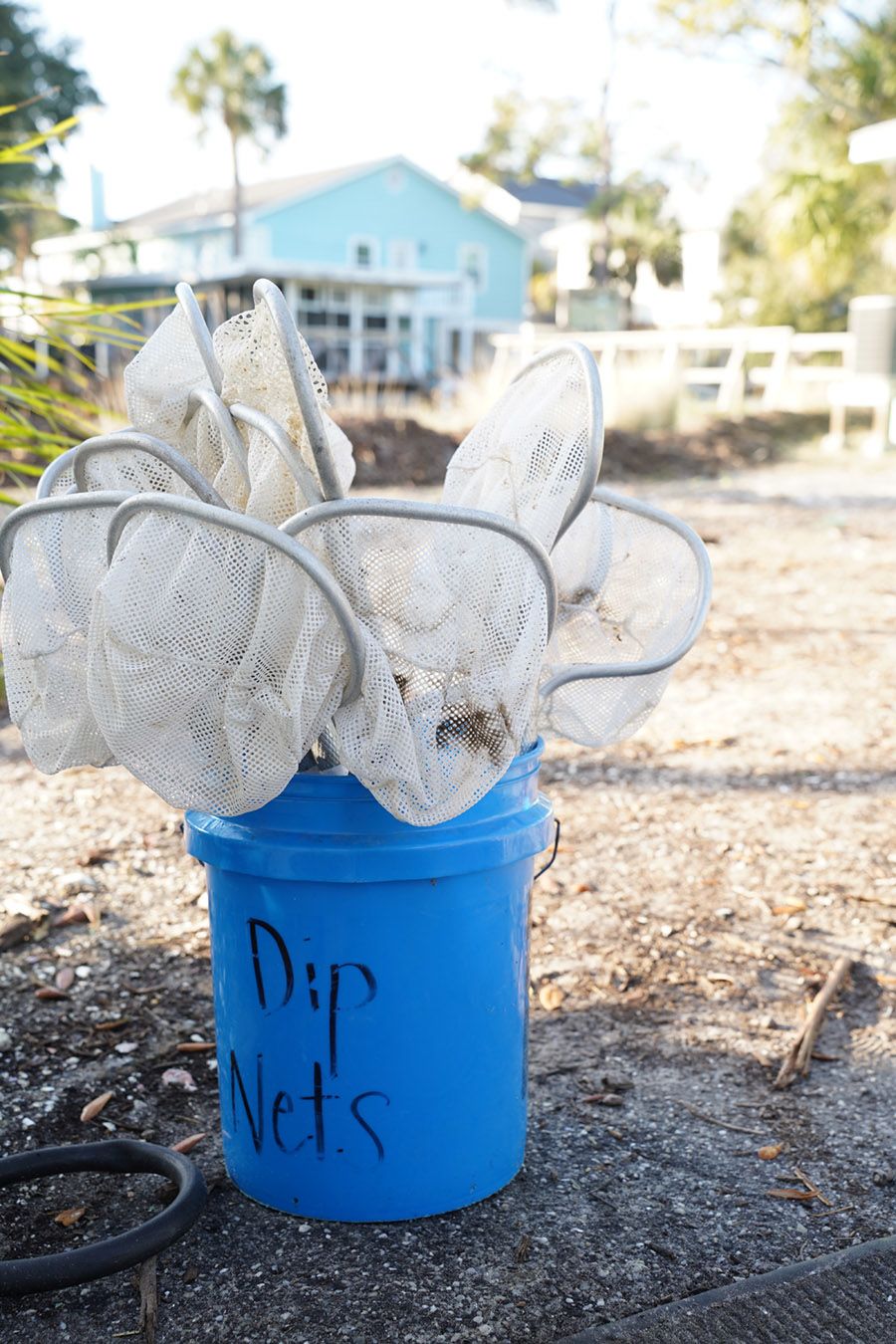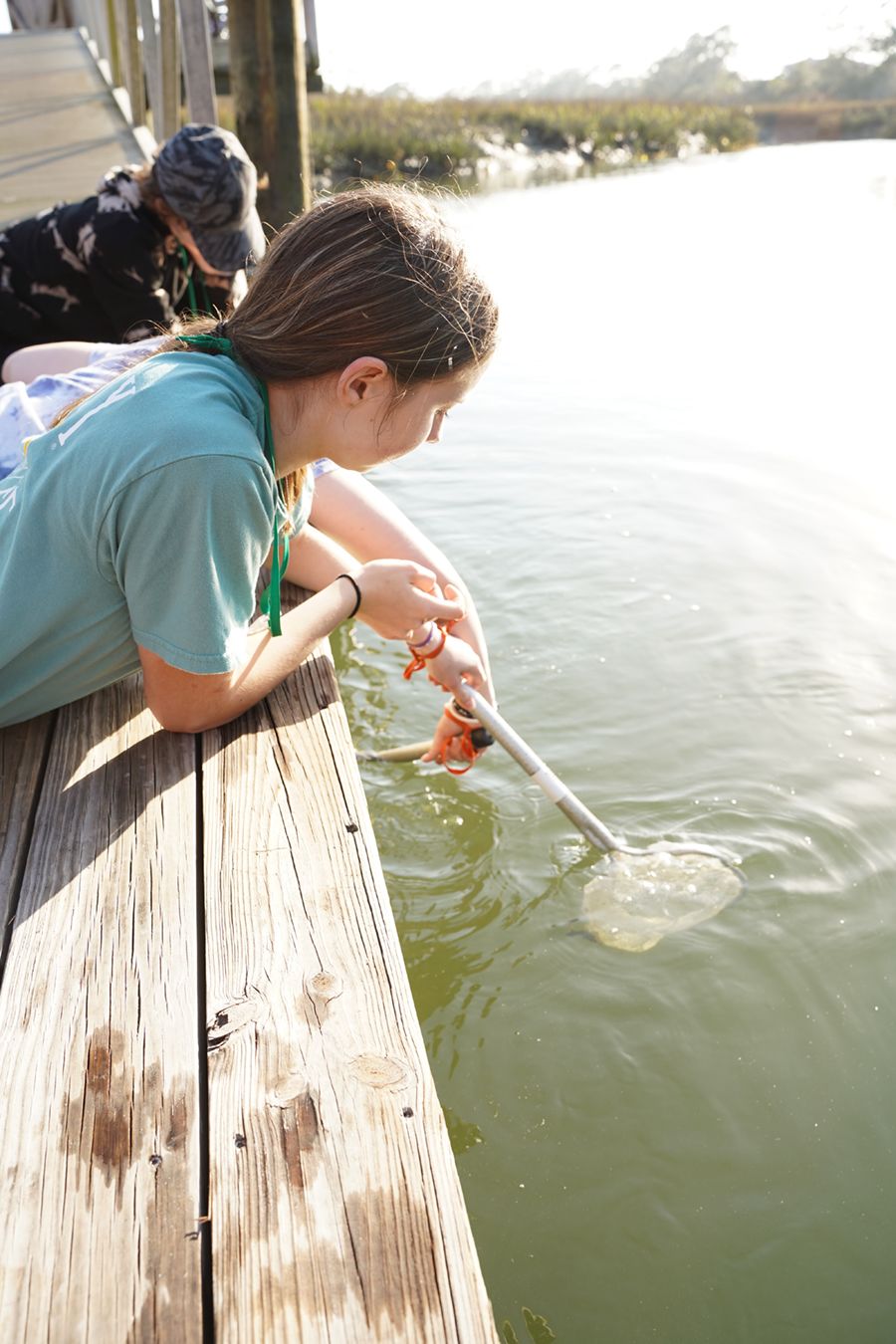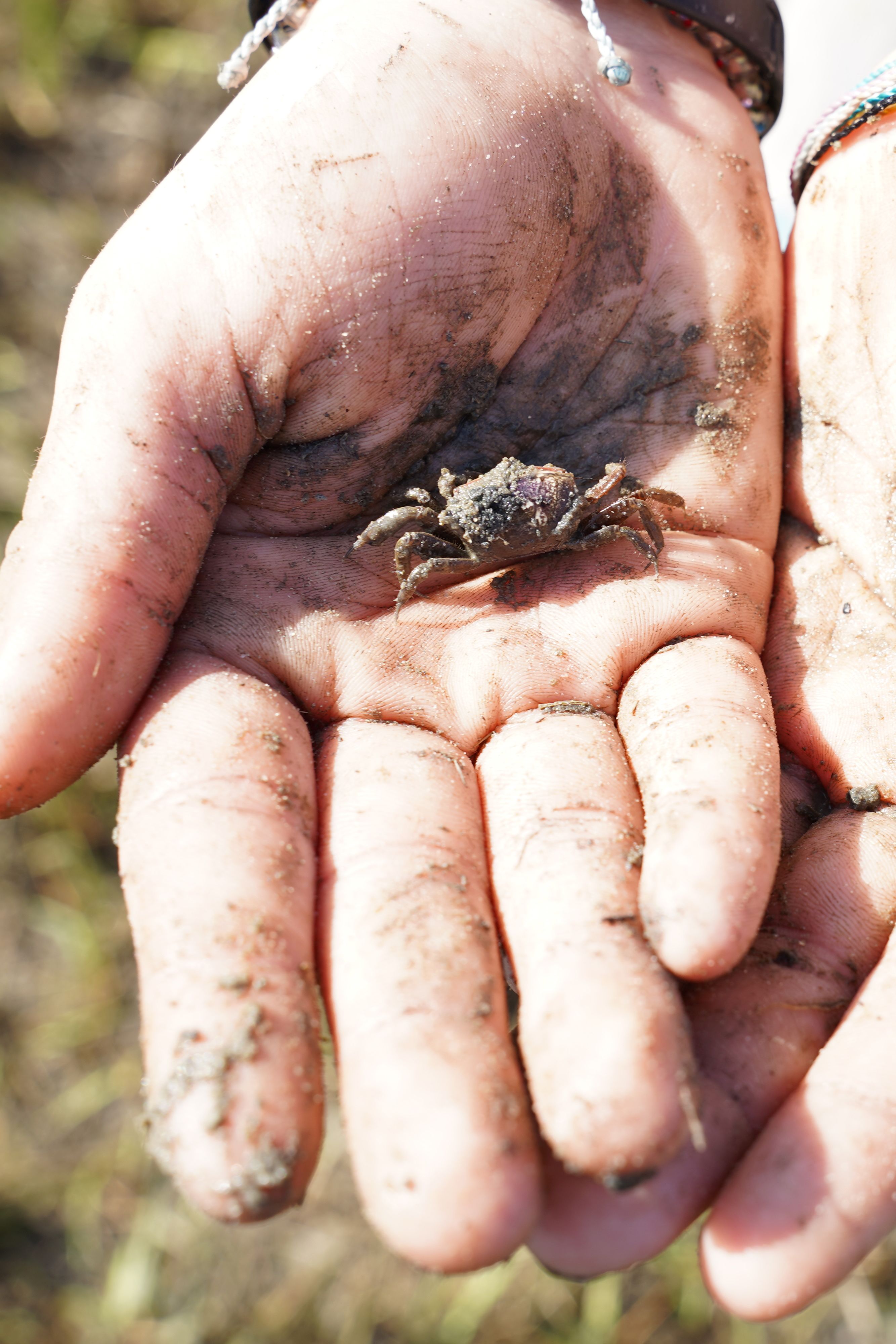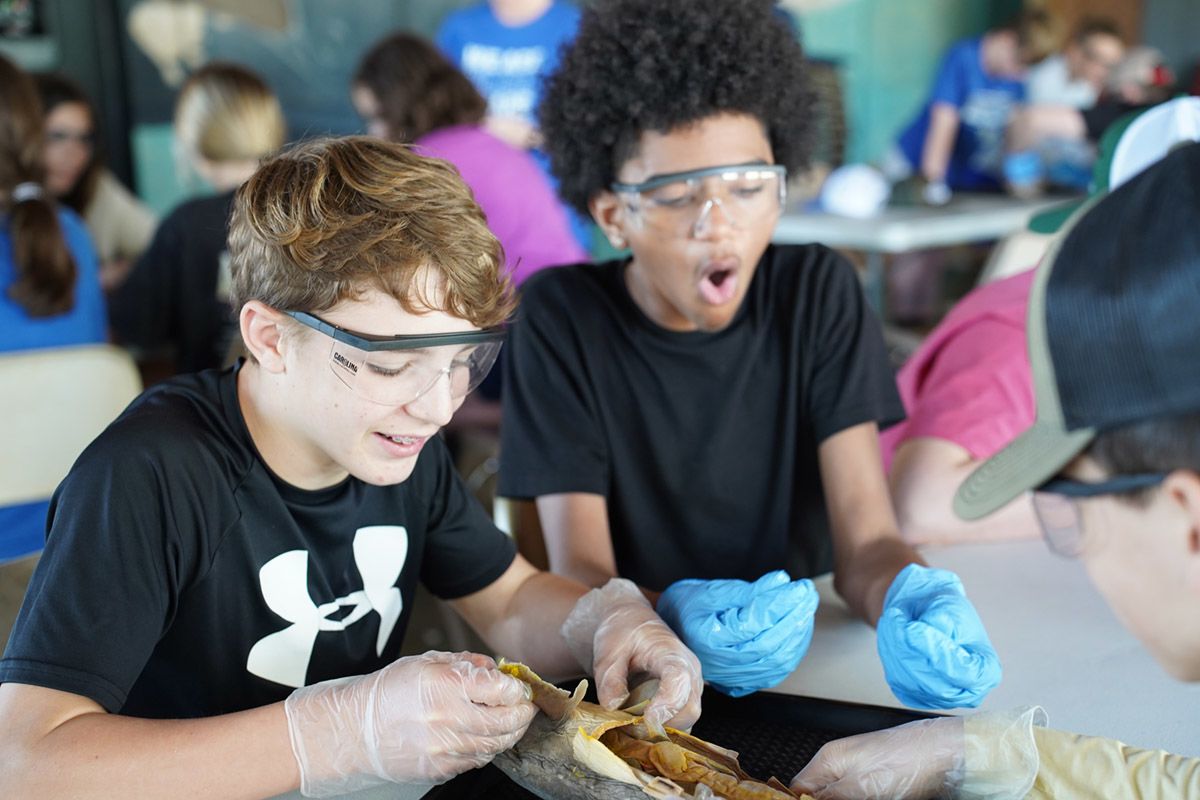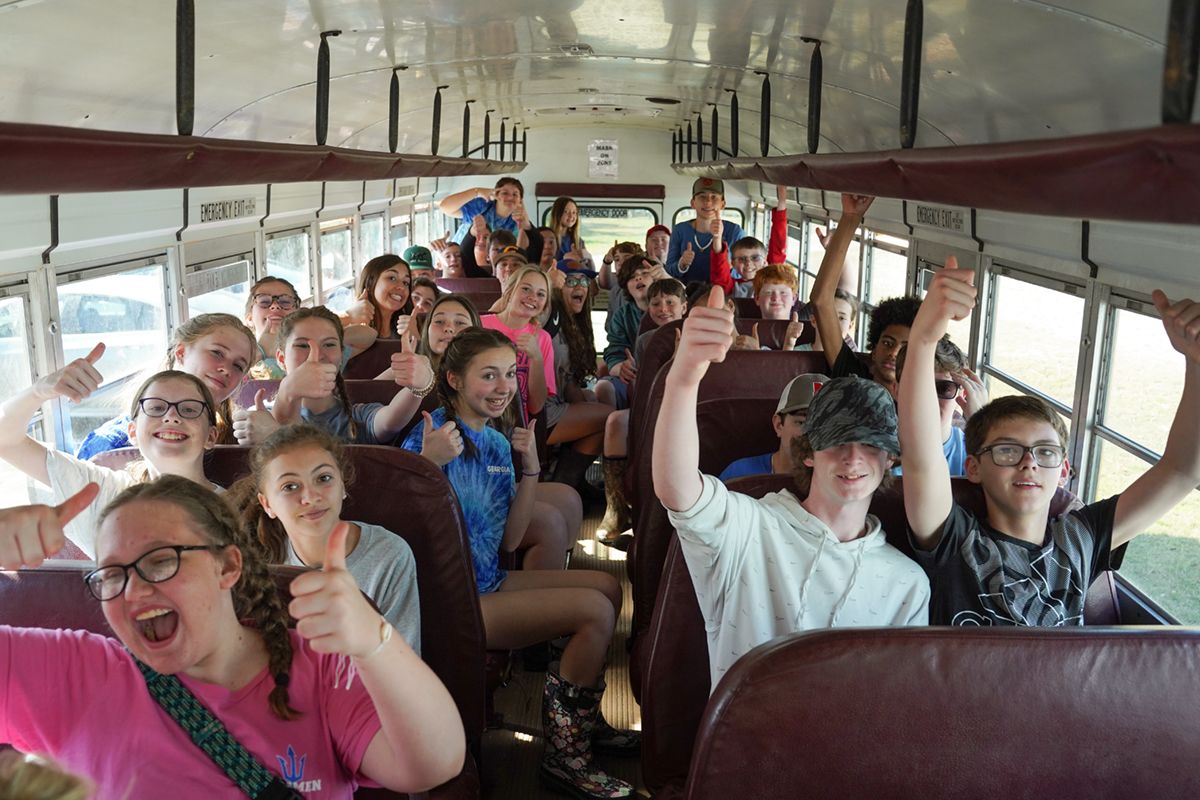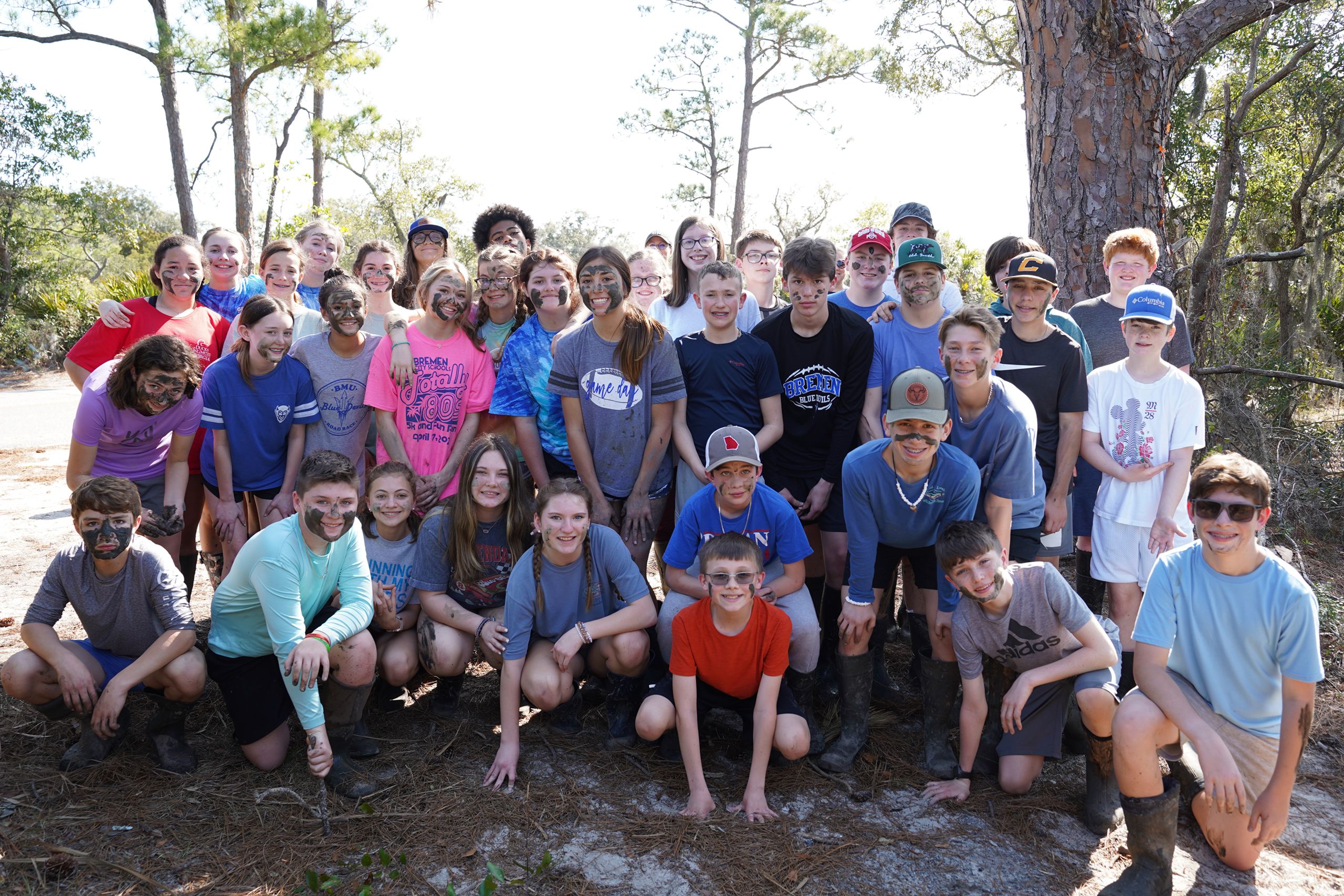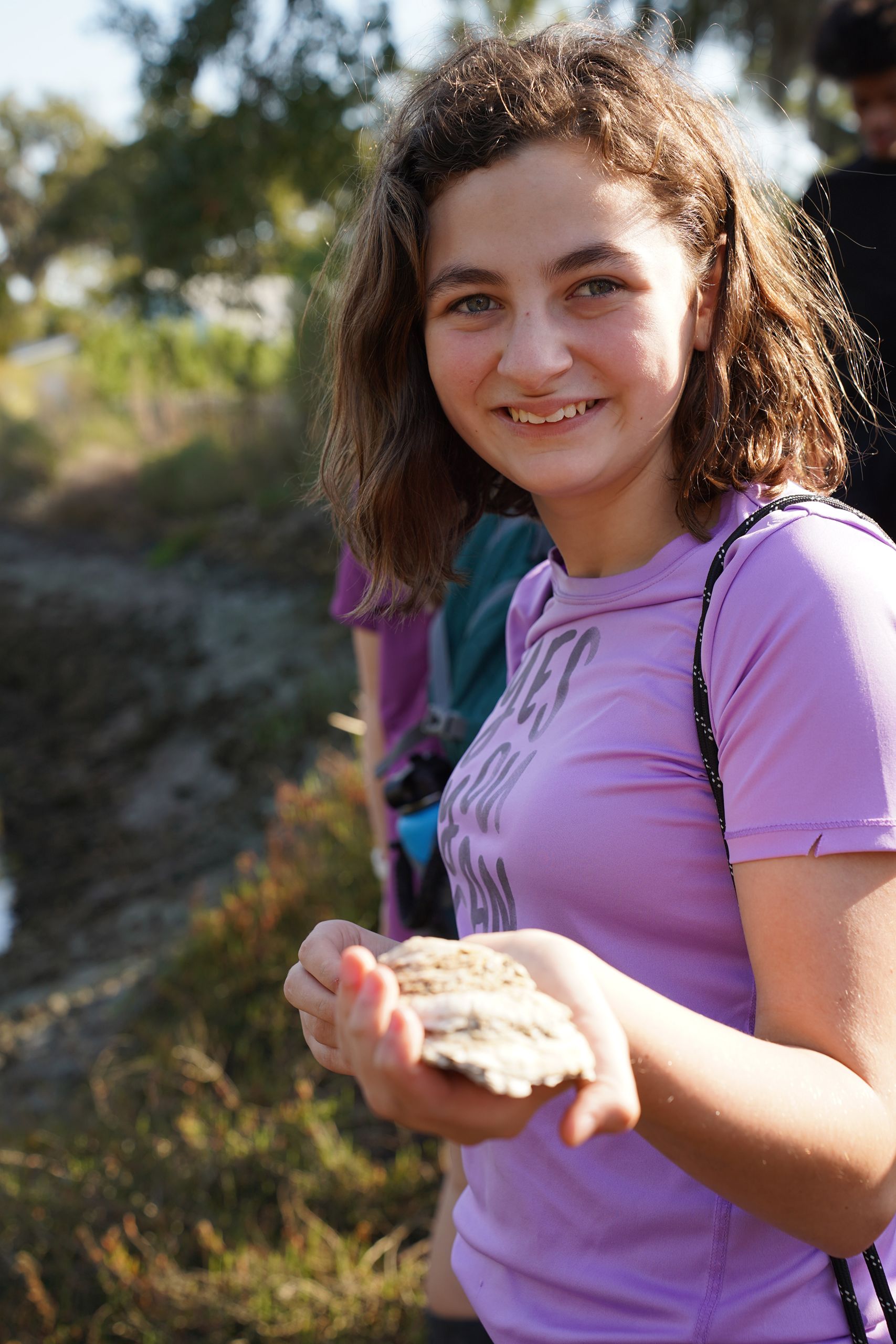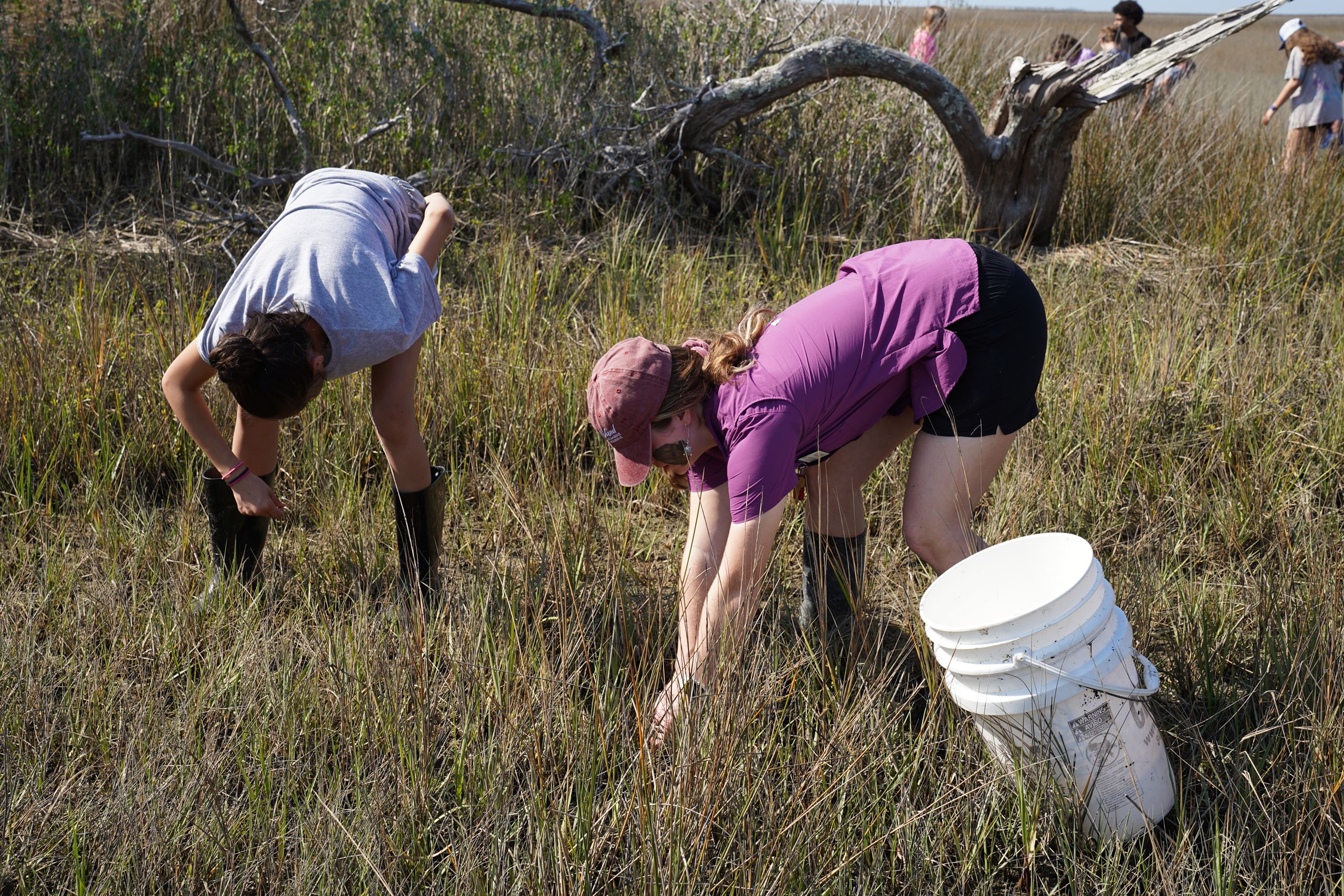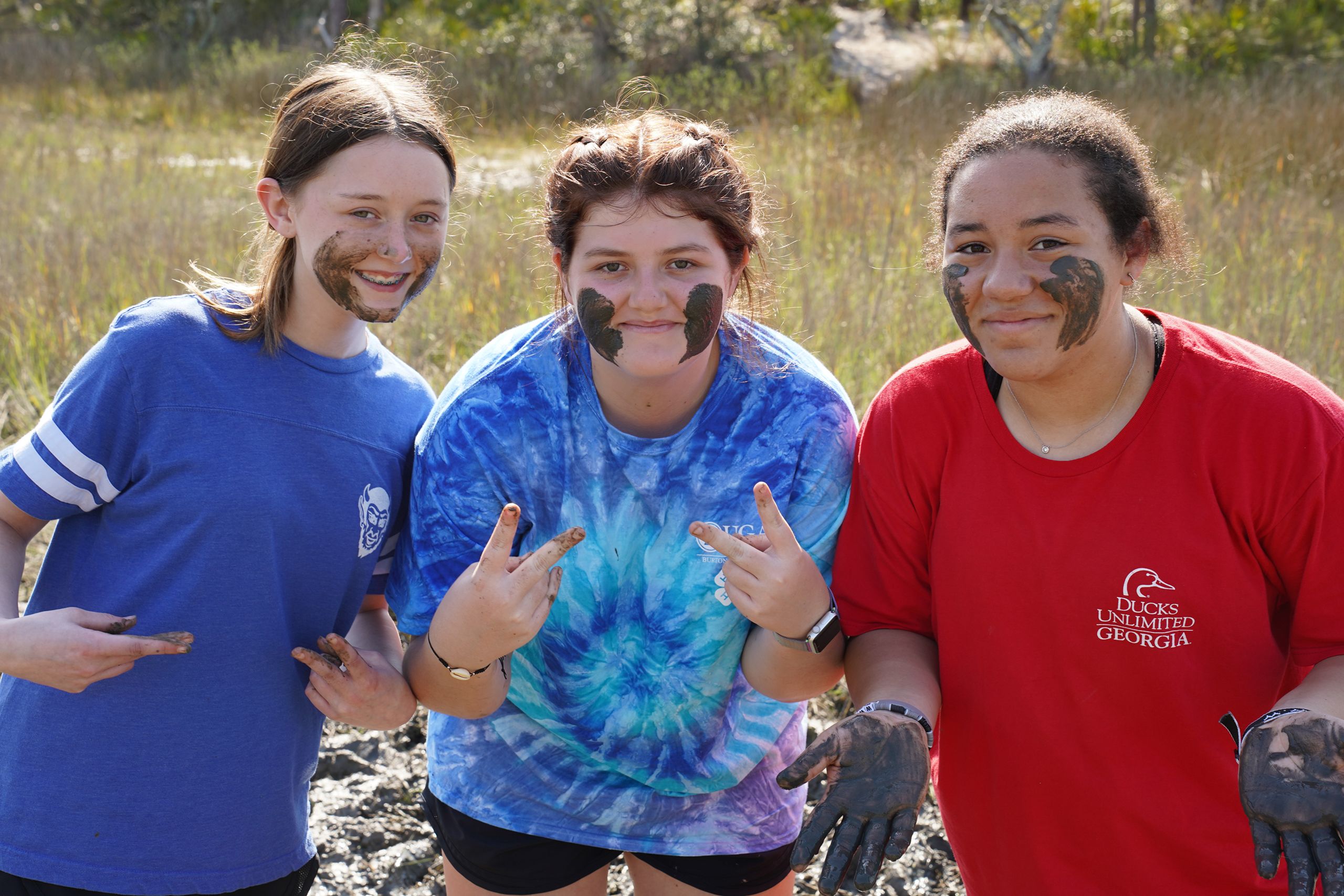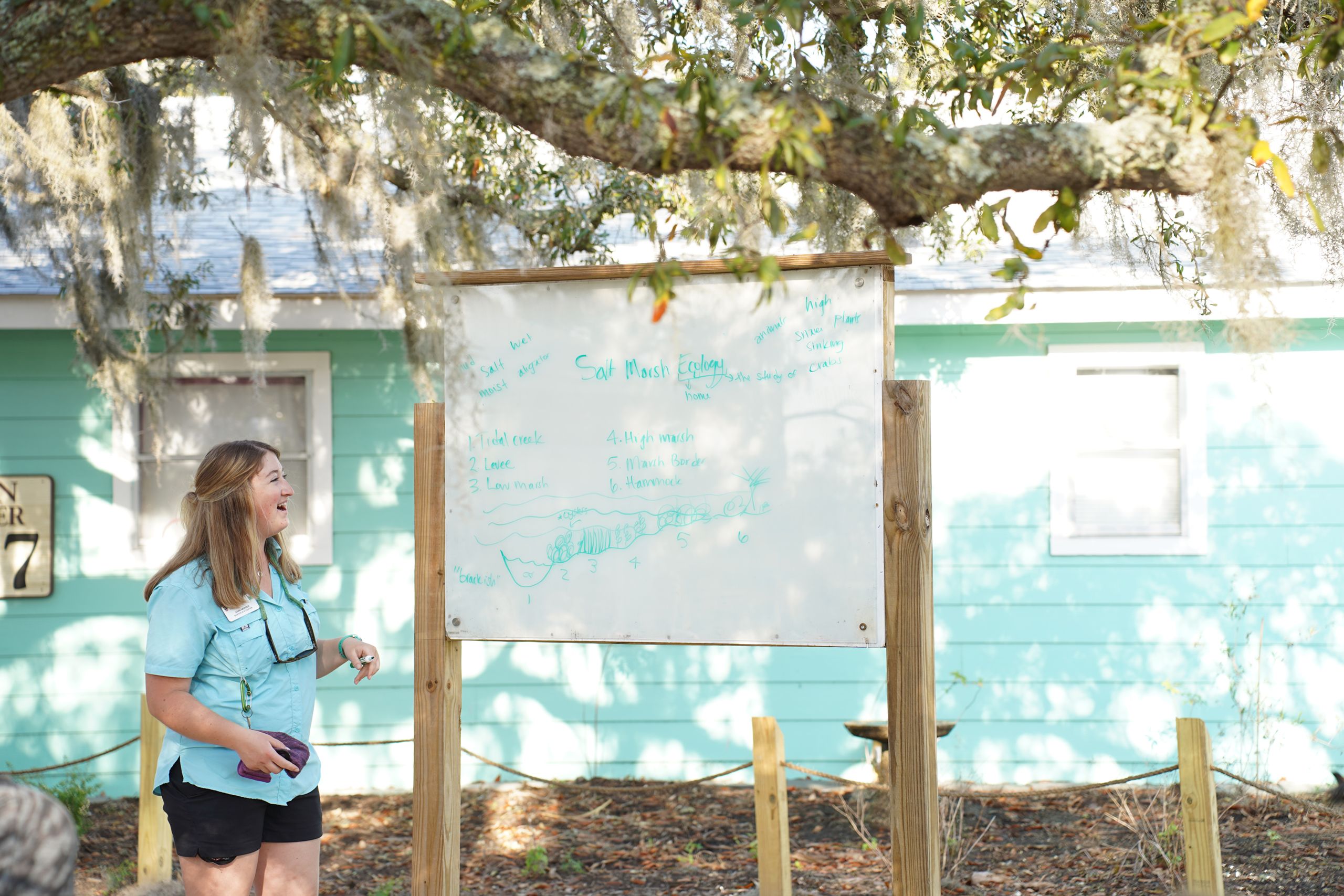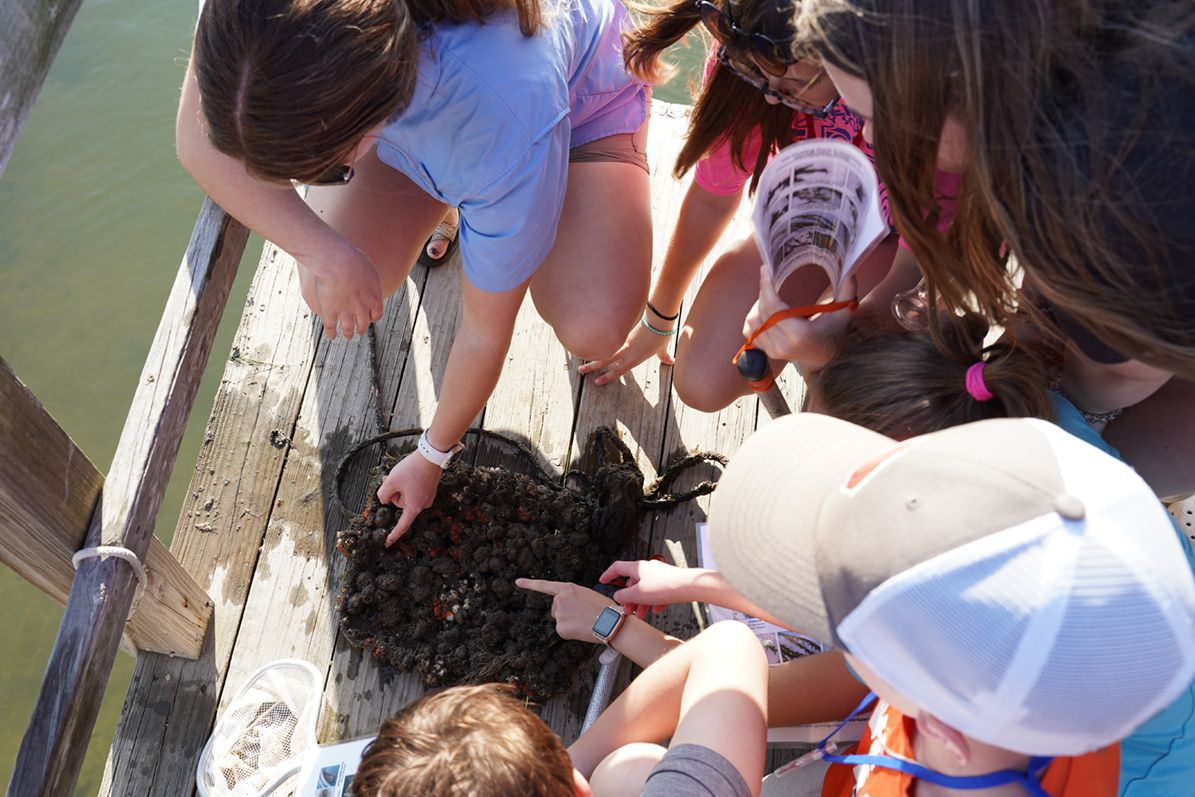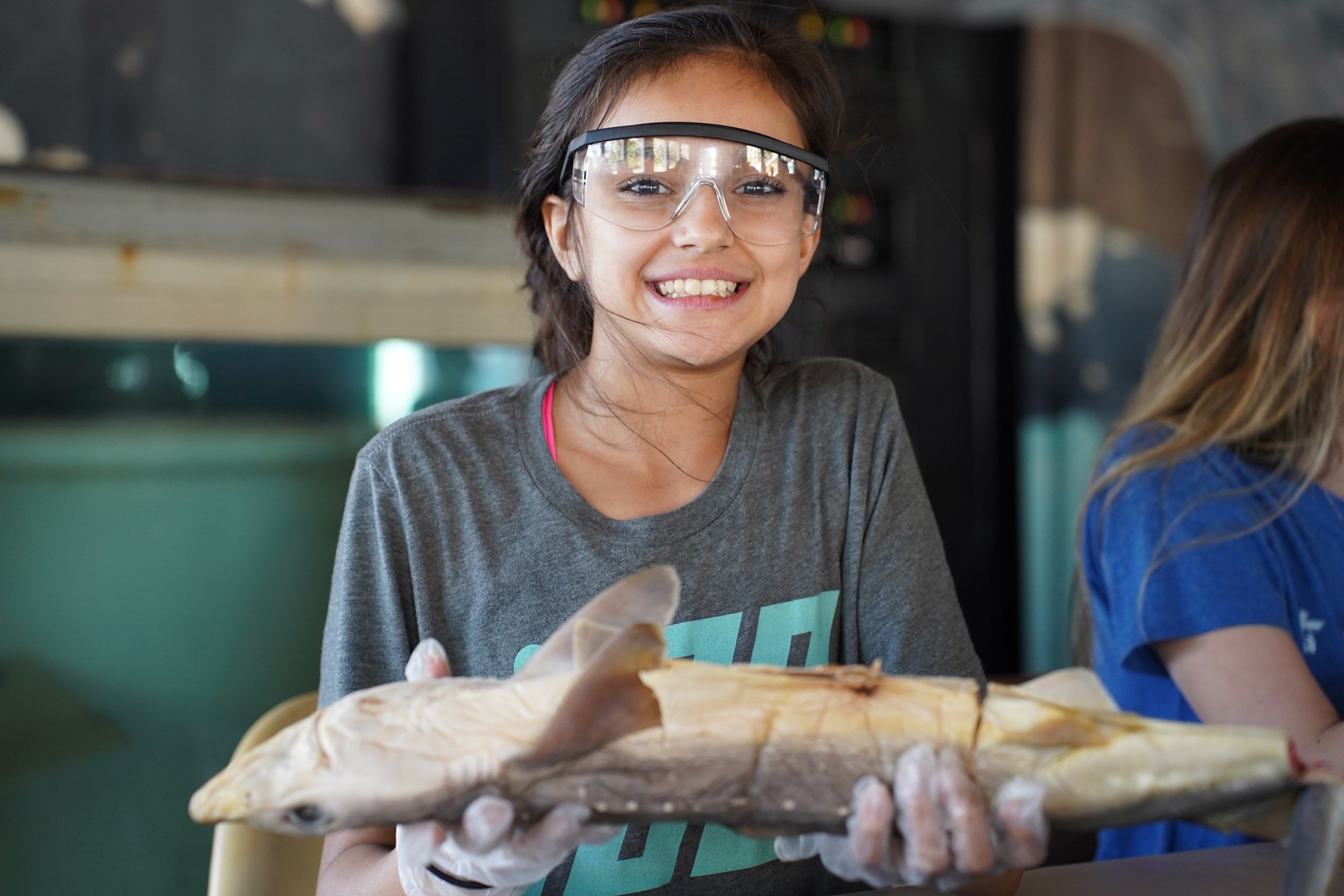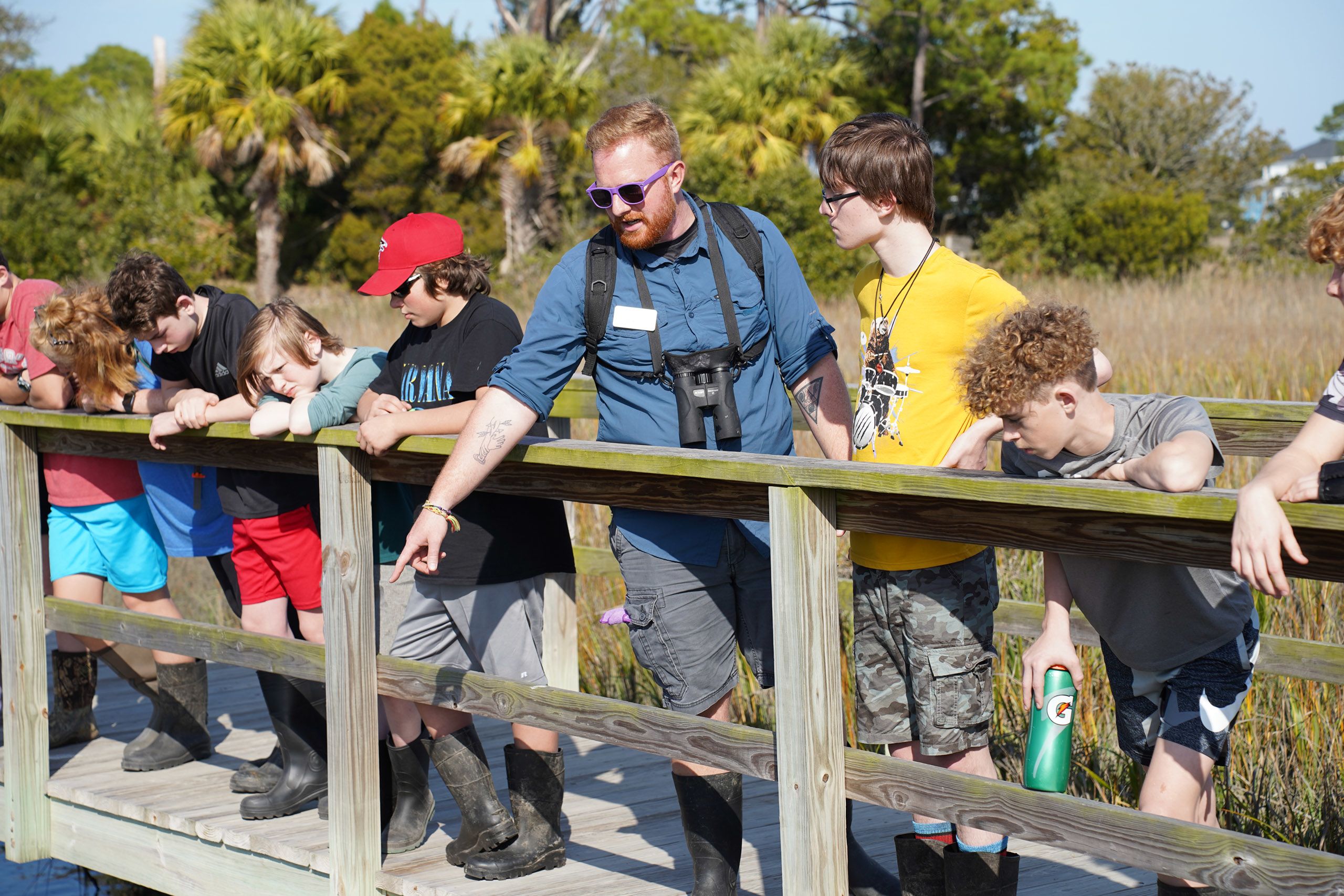Natural
Wonderland
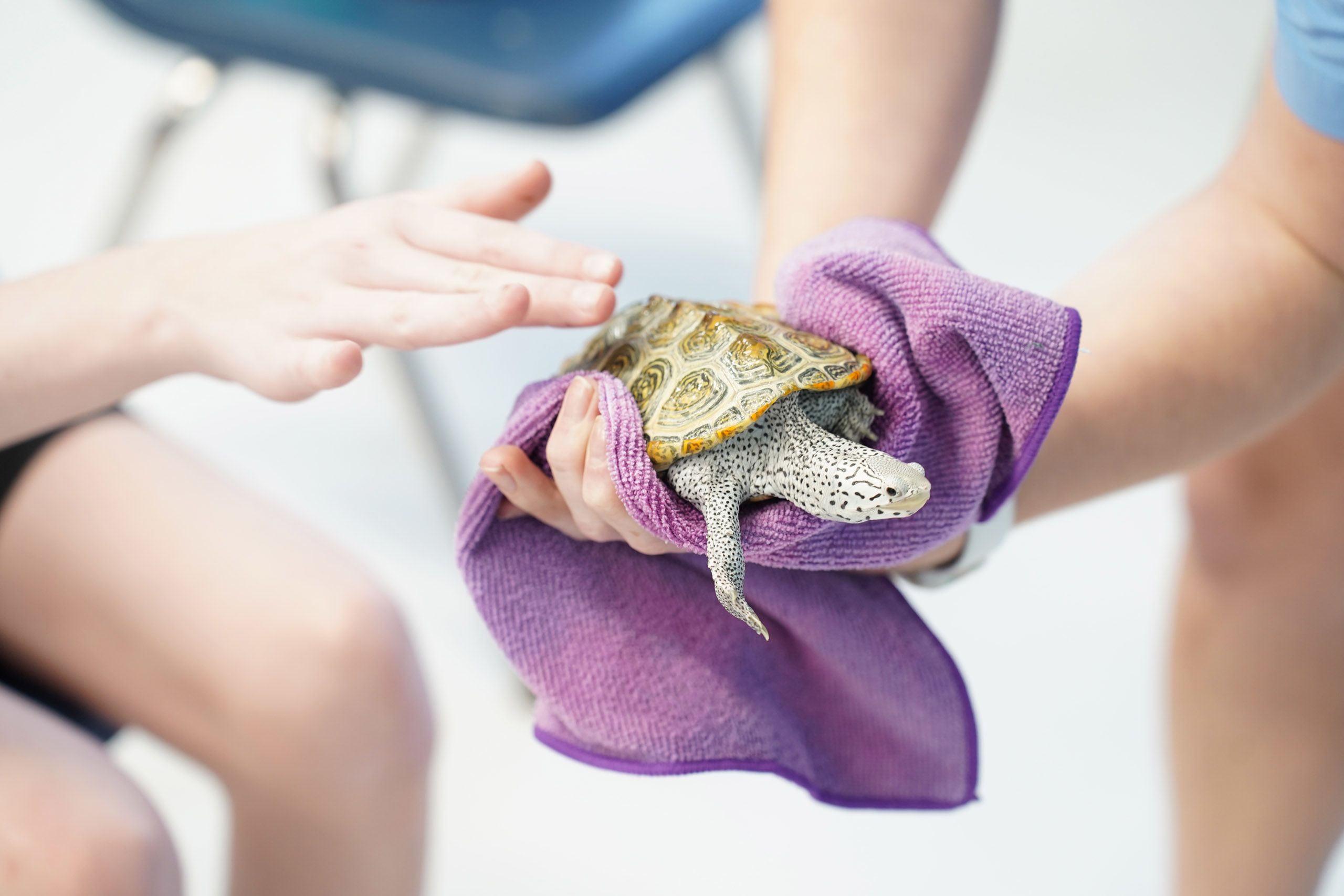
Georgia 4-H's Environmental Education program builds deep connections between students and nature
A math teacher and a gym coach take long steps down to the sandy ground from the bottom stairs of two yellow school buses with “Bremen City Schools” printed on the side. It is still early March, but the air is already warm and sticky; a gentle breeze stirs the Spanish moss that droops from live oak trees above their heads. An instant later, 64 middle-school students pile out of the buses and take in their surroundings at Burton 4-H Center on Tybee Island.
To the south, a winding dock sprawls across the brackish marsh and the sun sparkles on the water as it stretches towards the horizon. To the east, the trees at the edge of the barrier island open up to the Atlantic Ocean. At the north end of the center, special habitats provide a home to native animal species.
The exuberant students and their chaperones from the western suburbs of Atlanta inhale the mingled scent of salt and fresh water from the marsh around them, prepared for a three-day adventure with the Georgia 4-H Environmental Education program on Georgia’s coast. Each young person who participates in a field study at Burton 4-H Center learns the narrative of coastal ecology — and each student becomes part of the center’s own narrative.
The Georgia 4-H Environmental Education program extends a world-class learning experience to more than 42,000 students every year. Six 4-H centers spread from the mountains to the sea offer both residential and day-learning opportunities for youth from public, private and home-based schools throughout the academic year. Experienced environmental education instructors at each of the centers enthusiastically provide a comprehensive view of the history and habitats of the area, using the outdoors as a living laboratory.

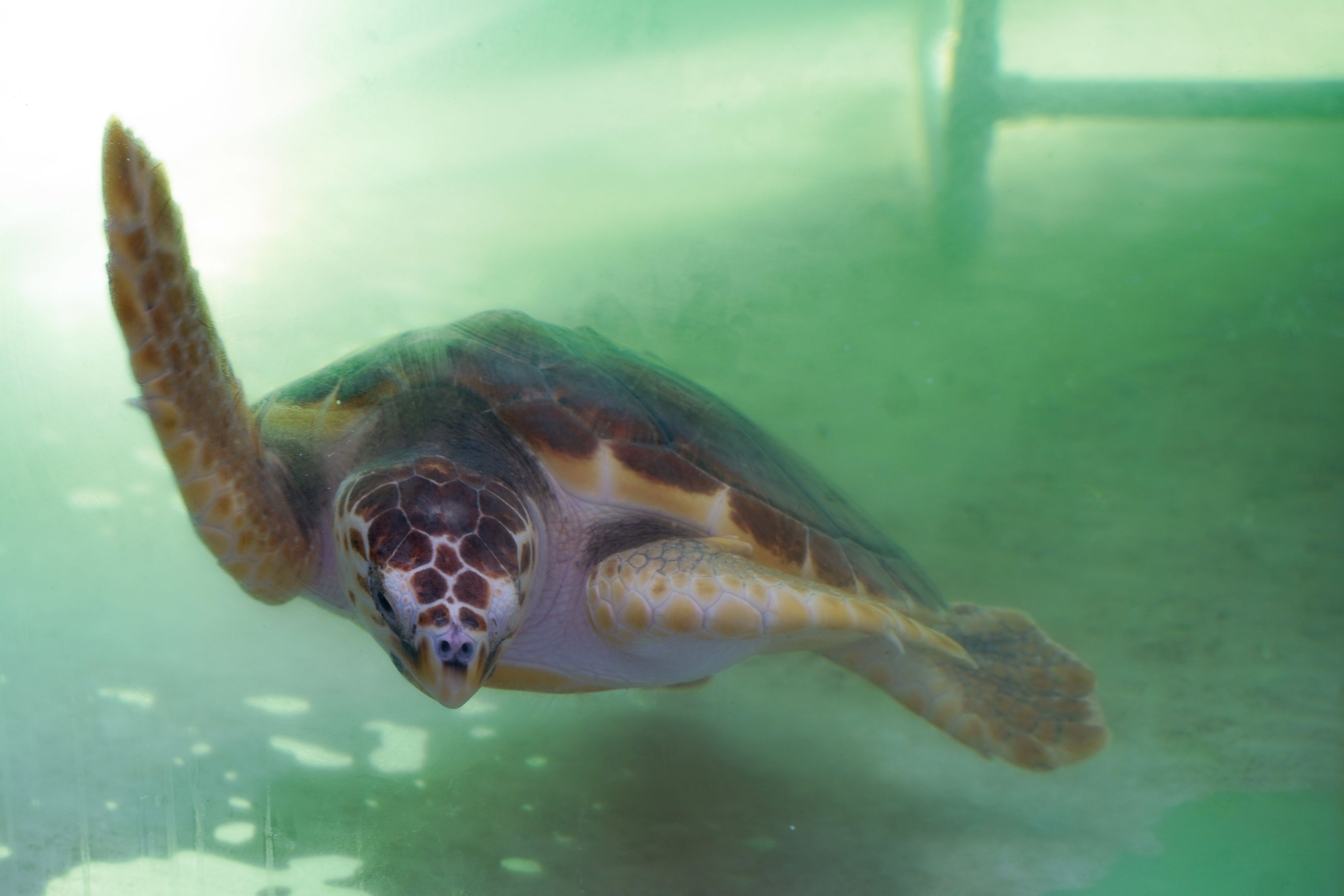
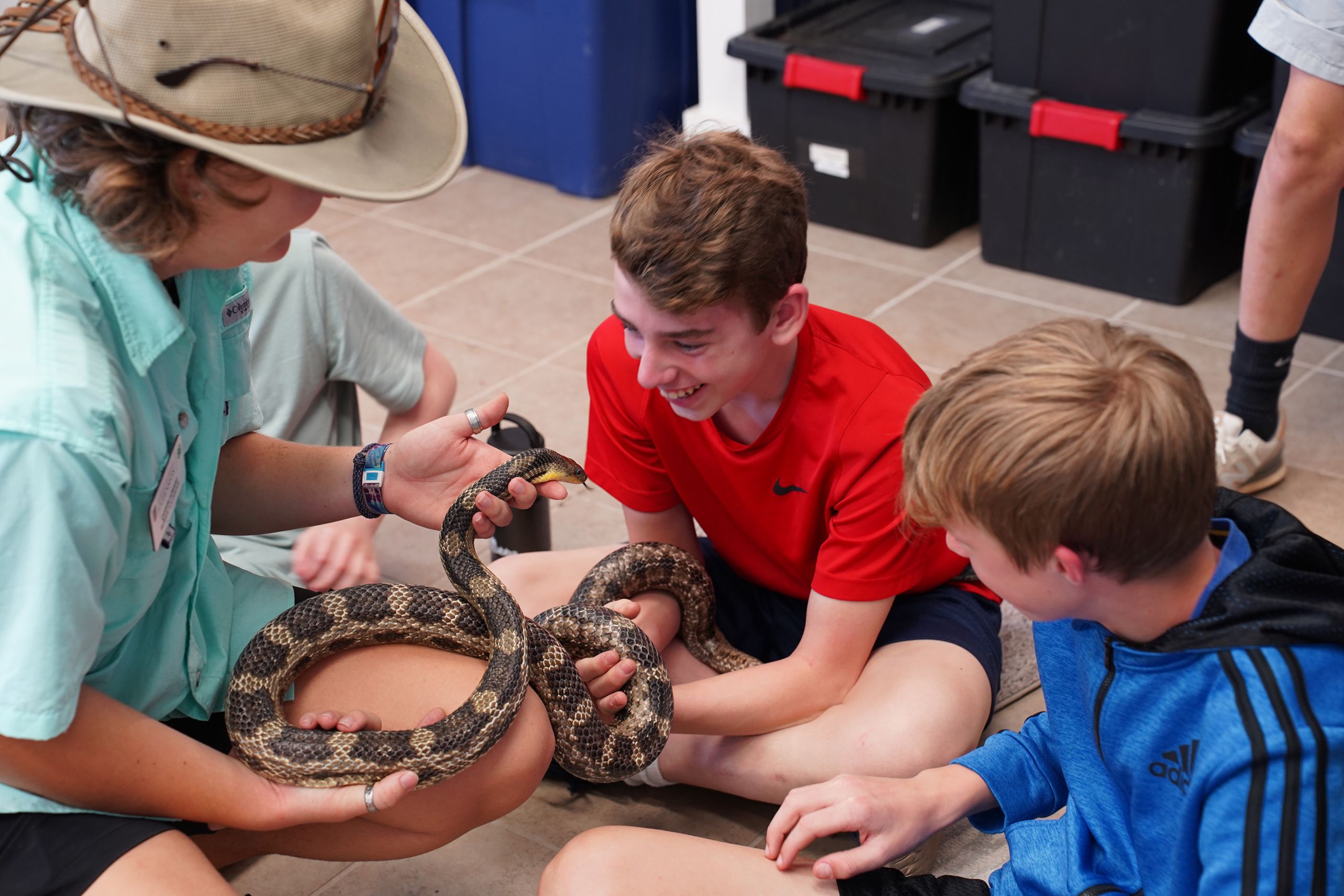
Leaders at Burton 4-H Center hold up signs so the seventh graders can find their assigned crews — each student is either a sea turtle, a manatee, a raccoon, an osprey or an alligator for the next three days. These native species, plus dozens more, will be covered in the “Coastal Critters” class that each crew will take part in during their stay. Many species live on-site and are cared for by specially trained staff with a deep respect for local wildlife.
Each group will rotate through several life-science classes including “Salt Marsh Ecology,” “Beach Ecology” and “Shark Dissection.” In the salt marsh, two tiny crabs scurry over the toes of a seventh grader whose eyes widen with awe at the up-close encounter with marine life. Everyone jumps up and down in unison to feel the vibrations that are created in the spongy ground beneath them — a mix of water, sediment and vegetation that supports hundreds of plant and animal species. Teachers and students alike gain an appreciation for the ecosystems that make the coast unique, and they leave with an understanding of what they can do to protect these fragile systems.
More than 1 million students have taken part in the Georgia 4-H Environmental Education program since it was founded in 1979. The instructive possibilities across the six centers follow a nature-focused curriculum that includes team building, outdoor skills, ecology and living history. An essential partnership with education leadership in Georgia and surrounding states enables children to gain understanding of the natural world around them in ways that are not possible inside classroom walls but are aligned with current state educational standards.
As twilight approaches on the Bremen school’s second night on Tybee Island, the manatee crew has finished with kitchen patrol duties while the ospreys play beach volleyball in the common area — at least half of them wearing light-up squid hats purchased from the center’s gift shop. Close by, three students sit on the bleachers excitedly discussing the dolphin they spotted from the beach earlier that afternoon, sharing thoughts about future careers in coastal preservation.
The math teacher, the gym coach and five other educators from Bremen Middle School chat with their students as the sun sinks below the tree line. “Yes, we do have to go back to school tomorrow,” they assure their charges, who yearn to make the experience last as long as possible.
Georgia 4-H seeks to inspire and provide opportunities for each child who participates in 4-H programming. The 4-H Environmental Education program affords that chance to thousands of additional students who visit 4-H centers each year.
As the school buses rolled through the gates of Burton, headed back to Bremen, each person on board left with a deeper connection to the Earth and the ecosystems that share it.
Did you enjoy this story?
Check out recent issues of the Almanac for more great stories like this one.

